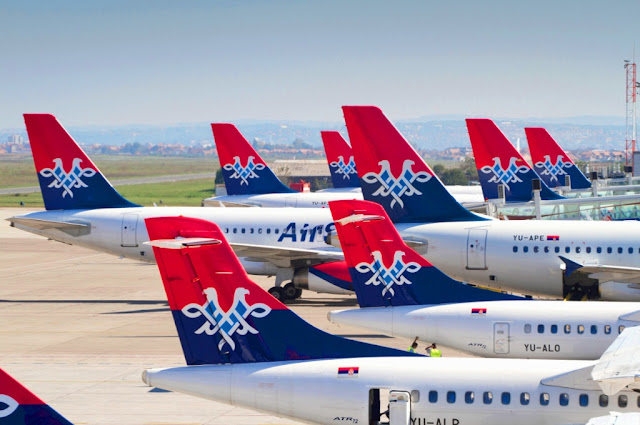Air Serbia outlines fleet, network and passenger plans for 2023
Air Serbia plans to grow its passenger numbers between 10% and 20% on an annual basis, handle over three million travellers in 2023 and further expand its fleet and route network with new long haul destinations. The carrier’s CEO, Jiri Marek, noted, the plan for 2023 would be to welcome over three million passengers, up from the 2.76 million handled in 2022. Of those, the airline anticipates having 30% of travellers transferring through Belgrade to onward destinations. According to Mr Marek, the carrier’s goal is to overtake JAT Yugoslav Airlines’ results within the next two to three years, without specifying in which metric. JAT registered its busiest year in 1987 when it welcomed 4.531.000 passengers on board its aircraft.
Network plans
Air Serbia has so far announced it will launch nineteen new routes during the course of 2023, however, more are to follow. Mr Marek noted the carrier would restore flights to Cairo following a hiatus of over three years this spring, with the service expected to resume “around Easter”, which takes place in April. Flights are yet to be scheduled. “In our strategy, we are also looking at Slovakia, southern Poland, the Czech Republic and Austria. We believe that Belgrade is geographically very favourably located and will therefore attract traffic”, Mr Marek recently said.
The airline also plans to grow its long haul network with the addition of a third Airbus A330-200 jet. Beijing and Shanghai are earmarked as new destinations in China, although Mr Marek noted the introduction of these two is “a very complex but very important process”. A new destination is also planned in North America, however, the CEO said it was still too early to comment which one. Mr Marek previously said the airline was looking at Toronto and Miami for its potential third destination across the Atlantic. Among the line-up of new routes slated to launch this year, Air Serbia’s CEO singled out Izmir as being an early success based on booking data.
Fleet plans
Commenting on plans to grow the fleet, Mr Marek said, “Renewing the fleet is one of Air Serbia’s strategic goals. During 2022 alone we took delivery of four ATR72-600 aircraft, as well as one A330 and one A320. We are especially proud to have put into operation the second wide-body A330-200 which carries the name of the famous Mihajlo Pupin”. According to the CEO, the airline plans to add “at least” two more ATRs and one A320 to the fleet and is looking into its third A330-200. Earlier this month, Air Serbia took delivery of its fifth ATR72-600 turboprop and wet-leased a sixth unit. “We should be proud of the country in which we operate and that is why we plan for the ATRs to receive geographical names and for the aircraft to feature the symbols of Serbia", he added.
Hub growth ambitions
Mr Marek said that Belgrade Airport’s ongoing multi million euro transformation will enable the carrier to further grow its operations and added his hope the airport would be able to keep up with the carrier’s ambitious plans. In an earlier interview, the CEO said, “The airport is undergoing major expansion and once it is completed, we believe that Belgrade Airport will be able to offer convenient, easy transfers with short connecting times without the congestion we usually see in Europe”. He added, “The expanded airport will have a capacity to handle up to fifteen million passengers. This year, we expect the airport to handle seven million, of which three million will be carried by Air Serbia. That leaves us with plenty of room to grow. The airport will enable smooth connections, which will bring competitive advantages and will bring passengers from other hubs to Belgrade. Since Budapest is no longer a real hub, the competition will mainly be with hubs such as Vienna, Rome, Milan and Athens. I think we have to see where the niche is for us”.
Profitability
Air Serbia ended 2022 with a record profit of 21 million euros and hopes to replicate that success this year. “We will never be able to match the cost advantages of low cost airlines, but we will try to achieve as much growth as possible in terms of efficiency and cost structure. That way, we will be able to operate at lower costs, which will be reflected in our profitability at the end of the day. When low cost carriers open new routes and stimulate new demand, it is good for everybody, because it is a new market for Belgrade Airport, it means additional tourists for Serbia and we get additional passengers into our regional network. We welcome competition”, Mr Marek recently told the “AIRzaehlungen” podcast.
.gif)










0 Response to "Air Serbia outlines fleet, network and passenger plans for 2023"
Post a Comment